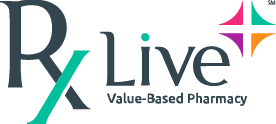A multi-part series on challenges and solutions to better medication adherence
It’s fundamental: if patients don’t take their meds — as prescribed — they’re not going to achieve the clinical outcomes their doctor wanted for them. In fact, it’s quite often the exact reverse; they get worse. Yet patients’ adherence to their medication regime remains a significant challenge.
Frankly, it’s no wonder. There are many factors that become virtual impediments to patients getting medication adherence all correct, and consistently, to achieve and maintain optimal clinical and related financial outcomes.
After thoughtful review of patients’ comments and peer-reviewed literature, the RxLive team has grouped medication-adherence factors into six major “buckets:”
- Cost
- Side effects
- Skills
- Understanding and knowledge (health literacy)
- Social and behavioral factors (both external and internal)
- Access to care and burden of the regimen
Really drilling down within those six buckets, separately and taken together, has enabled our clinical team to better evaluate a patient’s situation. They guide our pharmacists in helping patients — as well as their referring providers in many cases — better understand what’s at play in their lives. Through motivational interviewing and empathic listening, in our medication consults we keep all of these intertwined potential issues in mind. This enables us to help patients better comprehend what may be standing in their way of better health and a more-satisfying life.
Scope of the problem
Nonadherence not only can easily cost patients their optimum clinical and financial health, but the nation’s as well. The ramifications are huge…Poor medication adherence accounts for about 13% — or over 1/7th — of U.S. healthcare expenditures, or $290 billion each year. Nonadherence can be directly tied to increased morbidity, mortality and avoidable healthcare costs.
How much of nonadherence is related to the combination of the cost of meds and other essentials of daily life — food, housing, transportation and more — as factored against income? Quite a bit, sadly, considering we are one of the richest and most populous nations in the industrialized world.
Unpacking the cost bucket
High out-of-pocket costs, potentially dicey alternatives — For those who even have health insurance coverage, high out-of-pocket medication costs have a negative impact on medication adherence. Patients don’t fill even the initial prescription, let alone refills. They skip doses or cut pills in half to stretch their dwindling supply if they don’t have the money for a refill due to high co-pays. Concerns about medication affordability also can drive a patient to seek lower-cost therapies, use alternative ones, or buy medication from unreliable online sources or from sources outside of the country where quality can be a concern.
The National Health Interview Survey (NHIS) from the CDC has been monitoring the health of the nation since 1957. In more recent years, it’s begun to include questions pertaining to cost-related nonadherence (CRN), particularly as prescription drug costs and medication nonadherence rates have continued to rise.
Not surprisingly, the NHIS found that the patient populations particularly affected were the chronically ill, elderly and poor…or some combination of all three. There was a positive correlation of CRN and food insecurity, with approximately 1/3 of chronically ill survey participants unable to afford medication, food or both.
Lack of assistance — Lack of availability, immediacy of health benefits or other assistance programs are related to a greater decrease in medication adherence in any population group. Reporting on the NHIS data, Circulation reported that those aged 65 or older with Medicare benefits had lower CRN than those younger than 65 without healthcare benefits. In addition, JAMA published that patients with diabetes who participated in the Supplemental Nutrition Assistance Program (SNAP, formerly known colloquially as “food stamps”) were more adherent than those who didn’t receive financial assistance.
The more the meds…Polypharmacy — taking multiple drugs for one or more conditions — also contributes to CRN; the cost associated with multiple medications can be an immense burden on patients and a significant deterrent to adherence. According to the Centers for Disease Control and Prevention (CDC), 12.8% of persons reported using 5 or more prescription drugs in the past 30 days leading up to the survey.
Those with chronic conditions, typically including the elderly, have increased rates of polypharmacy, affecting medication adherence from numerous patient-related factors including cost. Some of these costs are avoidable when duplicate medications are prescribed, causing unneeded financial constraints on patients.
How pharmacists can identify the cost barrier
Depending on the patient, cost-related barriers to medication adherence aren’t always obvious. Some patients are embarrassed to admit they’re struggling. Many have no idea of the assistance programs out there that they may qualify for. In both the retail as well as telehealth consultation environments, pharmacists can and should interpret potential cost-related obstacles by carefully listening for verbal cues from patients. These can include when a patient asks about the cost of the medication during prescription drop-off, asking for generics or the costs of alternative medications, or if the pharmacy accepts coupons or a program such as GoodRx, SingleCare and others for the prescription.
Medication-filling patterns can raise a red flag to signal nonadherence, particularly for those on chronic medications. This requires the pharmacist to further explore the root of the poor adherence. Refills that are consistently made at later-than-expected dates based on the prescription directions is a sign pointing to cost-related factors, indicating that the patient is skipping doses or attempting to make the medication last longer. (There may be other factors involved, such as the patient having a hospital stay where their medications were supplied, so drill down but never presume.)
Listen and learn — As noted, pharmacists can identify patient financial challenges through motivational interviewing and empathic listening. Patients are so often embarrassed about their financial status and are unlikely to offer information in that regard without some prompting. When an expensive medication is prescribed, pharmacists can carefully ask if the medication is within their prescription budget. This opens the door for finding less-expensive options that will increase the likelihood of adherence to the prescribed therapy.
Improving the outcomes
Cost-related medication nonadherence can be improved by decreasing financial pressure as well as by modifying attitudes and beliefs that impact patients’ cost decisions. Pharmacists can employ several strategies to overcome patient cost-related barriers to medication adherence.
- Pharmacist-provided medication therapy management (MTM), as offered by RxLive, is a method to reduce patient costs by evaluating which medications can be stopped with minimal risk to health, and the presence of duplicative or conflicting therapies…which can happen very easily in this era of great medical specialization.
- Lifestyle changes can also be evaluated and recommendations made to improve health and eventually reduce the need for certain costly medications.
- Ongoing patient counseling and follow-up by the same pharmacist allows for reinforcement of the necessity of medication adherence for optimal patient outcomes. This is especially important for those who find it difficult to truly understand the long-term effects that could result from deviating from their medication regimen when they have one or more chronic disease states such as hypertension, where patients don’t necessarily feel the effects of the medications they’re taking. Unfortunately, they do experience immediate and significant effects from their current financial pressures, contributing to CRN through prioritization of other expenses over medications.
- Identifying alternative, less-expensive medications or insurance formulary medications can be presented to the prescriber for approval. If brand-name drugs aren’t medically necessary, generic medications can be substituted. If no generic is available, less-expensive, brand-name alternatives should be sought whenever possible.
- Pharmacists can discuss with the patient’s provider about pill splitting as one method to reduce patient costs. Higher doses of some medications are often little to no more expensive than the lower-dose pills. In some cases (not all meds can be safely split, and certainly not capsules), this enables patients to use an inexpensive pill cutter to obtain two doses from one tablet…virtually doubling the value they receive from the cost they pay.
- Pharmacists can provide patients with sources of prescription medication financial assistance. Patient-assistance programs (PAPs) are established by many pharmaceutical companies to subsidize discounted or free medications to persons qualifying for financial assistance. (Pharmaceutical support programs aren’t available for Medicare recipients due to the Anti-Kickback Statute making it illegal.) Nonprofit organizations such as NeedyMeds and RxAssist offer PAP-searchable databases.
- Many free prescription discount cards and programs are available. Since some are more recent than others, pharmacists may know of some that patients as yet do not. These can be especially useful to patients with high insurance deductibles who need some financial relief until their deductible is met and benefits are payable, or for those without insurance coverage. A reminder that these discount cards mean that your health insurance is not being used, thus your payment under these programs doesn’t go against your yearly prescription or overall health deductible or copays. To learn more about the pros and cons of when to use discount programs and when it may not be the best choice, see our blog.
- Pharmacies can create a patient-resource document providing federal assistance programs, nonprofit assistance programs, and coupon sources for those that have cost-related barriers to medication adherence.
Summary
Cost and a patient’s ability to pay are a huge factor in medication adherence, particularly for expensive prescriptions. Pharmacists are in a unique position to identify cost barriers by being directly involved in both healthcare and patient financial medication transactions, and by carefully examining a patient’s medication-filling trends.
Because of pharmacists’ familiarity with drug pricing, brand versus generic medications, possible drug substitutions (and their potential risks), and having deep and broad knowledge of coupons and prescription drug financial assistance programs, highly skilled and attentive pharmacists can determine the impact of cost and income’s impact on a patient’s medication adherence. The results: improved health and patient satisfaction at a lower cost. A perfect trifecta of outcomes!
Resources
Pharmacies: Improving Health, Reducing Costs. National Association of Chain Drug Stores
Attitudes, Beliefs, and Cost-Related Medication Nonadherence Among Adults Aged 65 or Older with Chronic Diseases; National Health Interview Survey; Therapeutic Drug Use. Centers for Disease Control and Prevention (CDC)
Cost-Related Medication Nonadherence in Adults with Atherosclerotic Cardiovascular Disease in the United States. Circulation




